Ongoing Research
Mercury emissions from waste to energy plants
Mercury emissions from waste to energy plants should be monitored continuously from the end of December 2023, as described by BREF WI (Best Available Techniques Reference Document Waste Incineration).
A preliminary study by LEAP and the MatER Study Centre analysed and interpreted data collected in the period between 2016 and 2019 acquired with continuous instruments for monitoring mercury on 10 plants distributed in Italy for the treatment of different types of non-hazardous waste and presenting different configurations of the fumes treatment line.
This preliminary research, mainly cognitive, has highlighted the wide range of parameters involved, pertinent to the complexity of the emission treatment lines, to the variety of the type of reagents and, last but not least, to the chemical species with which mercury is present in the various points of the line, thus necessitating a more in-depth study, currently underway.
Treatment and valorisation of bioplastic waste
The research project firstly aims to give the right definition of the material under study (biodegradability, compostability, fossil VS biogenic origin). It will then follow a phase of research aimed to quantify the mass flows, identifying the quantity that is input into the different chains: plastic, organic, residual waste. Aspects such as the actual recycling rate of bioplastics, the interference of these new materials in the production of biogas and the increase in the biogenic share given to waste-to-energy plants will be analysed. In conclusion, economic considerations will be carried out to identify the best treatment option for bioplastic waste.
CO2 and waste to energy plants
The aim of the research project is to examine the state of the art on methods for calculating the biogenic fraction of CO2 emitted by incineration plants. The validity of the methods found in the literature will be subsequently verified using experimental data. The net CO2 emissions of Italian WtE plants will then be assessed in terms of emission factors [tons of CO2/ton of waste input]. The study will also be completed by assessing the benefits of incineration in terms of CO2 emissions, such as emissions avoided for the equivalent of electricity/heat production, for failure to landfill or for the recovery of metal from ashes. Subsequently, a technical-scientific survey on the state of the art of Carbon Capture and Storage (CCS) techniques applicable to WtE plants will take place, with the aim of evaluating the integration of a CCS system on a WtE plant both from a technical and economical point of view.
Suction Pyrometers for measuring the temperature in post-combustion chambers
The temperature of the gases in the post-combustion area of the waste-to-energy plants must be monitored continuously to limit the presence of polluting compounds in the fumes (fuel gases must remain for at least 2 seconds above 850 °C in order to avoid the formation of dioxins, toxic compounds easily absorbed by living organisms).
The activities of LEAP Laboratory and MatER Study Center include the execution of accurate measurements of the temperature of the fumes inside the combustion chamber of incinerators up to a temperature of 1600 °C, thanks to the use of suction pyrometers, which allow to accurately measure the temperature, maximizing the heat exchange coefficient between gases and measuring element and minimising thermal exchange by radiation between the measuring element and non-adiabatic walls of the post-combustion chamber. The coupling of suction pyrometers with a portable system of fumes analysers (equipped with sensors for O2, CO2 and CO) allows real-time verification of the correctness of the measurements.
Calculation of the R1 index
Through an innovative procedure developed by MatER, which exploits the actual operating data of waste-to-energy plants, the project aims to calculate more accurately the so-called R1 index with respect to standard methods.
The R1 index, introduced by Directive 2008/98 / EC of the European Parliament and Council of 19 November 2008, is an energy efficiency formula that aims to qualify the operations carried out in the thermal treatment plants of urban waste as “energy recovery” (R1) or “disposal ”(D10).
MatER is applying the new procedure for calculating the R1 index to a series of waste-to-energy plants on the Italian scene.
Measurement of ultrafine particulate and nano particles in conveyed emissions and in the atmosphere
The MatER Study Center, thanks to the equipment and instrumentation available at LEAP, performs experimental investigations for the evaluation of emissions and the chemical characterization of ultrafine and nanoparticulate particles from combustion processes in stationary plants, as well as for similar characterizations in the atmosphere close to plants of interest.
Ultrafine particulates and nano-powders are solid particles of less than tenth microns, similar to those of a virus and thousands of times smaller than those of a human hair. Their contribution, negligible in terms of the total weight of the atmospheric dust, becomes significant on the overall quantity of the single particles.
Their determination requires advanced techniques and instrumentation which, contrary to the conventional protocols used for the measurement of fine powders, must resort to the counting of the particles themselves, adopting systems developed only recently following the development of nanotechnologies.
